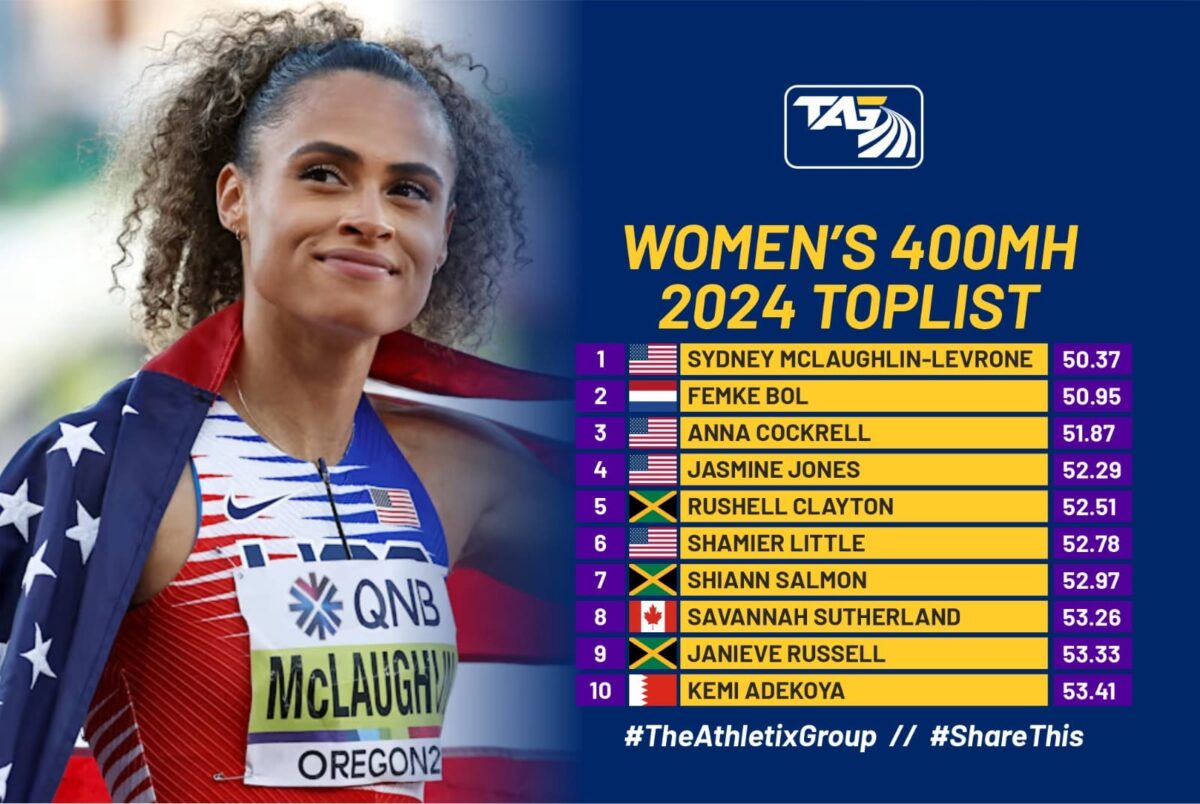
WATCH: USMNT star Christian Pulisic scores 15th goal of season for Milan with his weaker foot from wild angle
March 16, 2025
Predicting the Windsor Spitfires’ Quarter-Century Teams – The Hockey Writers OHL Latest News, Analysis & More
March 16, 2025
Strength sports are booming. If you use social media, you’ll see videos of athletes lifting giant weights. The public is interested in strength and strength sports, whether it’s powerlifting, strongman, or Olympic lifting. For decades, Westside Barbell has focused on powerlifting.
Powerlifting is a strength sport that tests an athlete’s one-rep max in three key lifts: squat, bench press, and deadlift. In a competition, powerlifters get nine attempts—three for each lift. After all attempts, the best squat, bench press, and deadlift results are summed to determine the total score. Just like how a no deposit signup bonus at casinos allows players to test their luck without an initial investment, powerlifters must strategically plan their lifts to maximize performance without risking early failure.
The athlete’s body weight and total weight matter in powerlifting. Comparing the total weight lifted with the athlete’s body weight yields points to rank athletes. This score is usually determined using dots, Wilks, or Glossbrenner, depending on the federation. Regardless of the scoring method, the goal is to identify the athlete who is the strongest pound-for-pound.
Powerlifting has two categories: raw and geared. Subcategories include raw with wraps, traditional raw, single-ply, multi-ply, and endless. Great gyms and communities await athletes who lift raw or in gear. Lou says powerlifting gave him his finest days and greatest friends.
Learning the Basics
As said, powerlifting evaluates an athlete’s best squat, bench press, and deadlift. Bench press assesses upper body strength, whereas squat and deadlift test lower body strength. Powerlifters must follow a training regimen to properly train all three lifts.
Athletes must follow a good powerlifting program and buy basic equipment. Raw powerlifters need shoes, knee sleeves, wrist wraps, and a belt. Geared powerlifters require these items, plus single- or multi-ply underwear, squat suits, bench shirts, and deadlift suits.
Due to its reduced cost and skill requirements, novices often pick raw powerlifting. Newcomers to the sport might start as geared powerlifters. As long as the athlete has a few years of strength training and a basis of strength, they may start geared powerlifting rapidly.
Indeed, powerlifting to competitive standards is the most crucial goal for beginners. This means squats are deep, bench presses are paused, and the deadlift is locked out and dropped correctly. Poor lifts may lead to disqualification from a powerlifting competition.
Goalsetting for Powerlifting
To assist beginner powerlifters remain focused, it is helpful to set clear objectives. Before they can advance in tournaments and avoid injuries, they need to learn the right technique.
Then we’ll move on to building strength. Set reasonable objectives for your squats, bench presses, and deadlifts from the outset. Do not set goals that are too lofty, since this might cause you to get frustrated.
First and foremost, focus on the short term. First, they reach their maximum lifts; after that, they try to set new personal bests of 5-10 lbs every few months. These little improvements soon amount to substantial strides.
Lifters may establish long-term objectives as they progress, but making consistent gains every week should be their first focus. Improved performance and reduced risk of injury are the results of technical accuracy and consistency.
Making a Training Plan
Setting up a workout regimen is the most crucial stage for beginners. Powerlifting training programs must be well-planned and implemented to help athletes gain strength. At Westside, we develop powerlifting programs using the Conjugate Method.
The Conjugate Method combines maximum, dynamic, and repetitive effort. Each aims to boost an athlete’s strength. The maximum effort approach develops absolute strength. Dynamic effort increases force development, making athletes more explosive. Repeated exertion builds fitness and work capability.
We may create a lifter without flaws that hinder progress or competitiveness by using these established strategies. Training must be structured properly for our approaches to work. At Westside Barbell, we plan and execute powerlifting programs as follows:
Timetable: Weekly Training
- Monday: Max Effort Lower (squat, deadlift, or nice morning variant)
- Wednesday: Max Effort Upper (bench or overhead).
- Friday: Dynamic Effort Lower (squat variant, wave training)
- Saturday: Dynamic Effort Upper (bench variation, wave training)
Training Day Planning:
- A: Main Exercise (squat, bench press, deadlift, good morning variant)
- B: Primary Accessory Exercise (multi-joint)
- C: Accessory Exercise (multi or single-joint)
- D: Accessory Exercise (single-joint movement)
- E: (optional) – Accessory Exercise (single-joint movement)
- F: (optional) – Accessory Exercise (single-joint movement)
Remember that this is merely a training week and day outline. Each powerlifting session must be well-organized and incorporate proper exercises. Our Base Building and Starting Conjugate articles explain how to create a beginner powerlifting program.
Gym membership or home gym setup
Powerlifting requires specialized equipment, so selecting the right training environment is crucial. Some gyms prohibit powerlifting, making it essential to find a facility with proper bars, racks, and weights. A well-equipped gym with experienced lifters and spotters helps beginners progress safely.
If access to a powerlifting gym is limited, setting up a home gym is a great alternative. A full-frame squat rack with a retractable bench allows for essential lifts like squats, bench presses, and deadlifts. Investing in quality bars—such as a power bar, safety squat bar, or cambered bar—improves training variety.
Safety is key when lifting at home. Training with a small group ensures support, but if that’s not an option, a squat rack with safety pins or straps is a must. Spending extra on reliable equipment can prevent injuries and ensure long-term progress.
Safety and Injury Prevention
Training safely requires the right spotters and gear, but proper technique and intelligent weight selection are of equal importance. No matter how experienced they are, powerlifters need to follow proper form and only lift weights that they are capable of lifting precisely.
Feel the burn before and throughout your exercises; making decisions based on selfishness increases the risk of damage. Make sure there’s adequate stimuli without overtraining. Perseverance in training unlocks potential, but intensity without rest may squander it.
Train smart, stay controlled, and keep progressing.
Living the Powerlifting Life
You must give your all to powerlifting. Without commitment, even the most well-organized program and state-of-the-art equipment are nothing. Strict training, proper diet, and self-discipline are necessary for success.
It’s important to stay focused all year round, and exercising with others is even better. But what really counts is mental toughness. Especially for newbies, not getting enough sleep and not working out will slow them down.
Consistency is key, but it’s worth it when you get a spectacular meet. Prioritize your goals over fleeting pleasures; success lasts longer than a night out. Consistent progress and excellent morale are the results of a methodical strategy.







